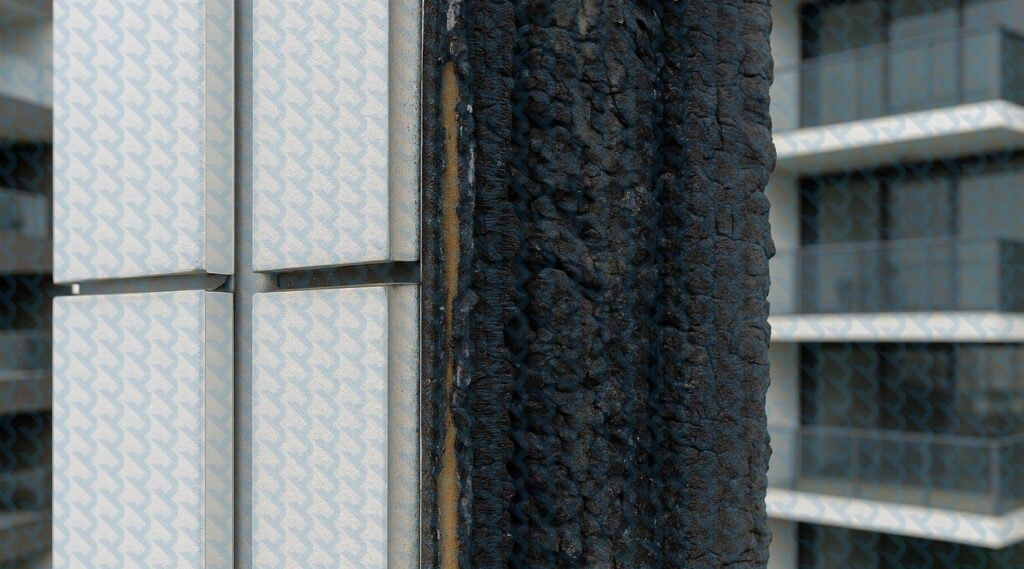Why Combustible Cladding Compliance Matters More Than Ever
The issue of combustible cladding in Canberra has become a top priority for building owners, body corporates, and strata managers across the ACT. Following national building safety incidents and increased scrutiny from regulators, the ACT Government has stepped up its push for proactive cladding assessments and remediation.
The ACT cladding regulatory update for 2025 reinforces the legal obligation to identify and resolve fire-prone façade elements—most notably aluminium composite panels (ACP) and expanded polystyrene systems (EPS). These materials, when non-compliant, pose significant fire hazards, impacting safety, insurance coverage, and even property values.
At CPR, we know that tackling compliance doesn’t come naturally to every property owner. That’s why we’ve built this checklist—to help you turn complex rules into clear, actionable steps. With insight from real projects, we guide you through every phase, from first inspection to final certification.
What Is Considered Combustible Cladding in the ACT?

Combustible cladding refers to any material used on a building’s exterior that contributes to fire spread. As defined by Canberra building regulations on cladding, common culprits include:
- Aluminium Composite Panels (ACP) with polyethylene cores
- Expanded Polystyrene Systems (EPS)
- Timber products lacking fire certification
- Foam-backed render and untested insulation materials
Under the building code for combustible cladding, these materials must be replaced or shown to pass strict fire-resistance benchmarks. The presence of such materials—especially on upper levels, balconies, or egress points—creates high-risk zones that need urgent attention.
Step 1: Determine If You’re Affected – Do You Need a Cladding Audit?
Your property may need a formal cladding audit in the ACT if:
- It was built or renovated between 1997 and 2020
- It uses aluminium, foam, or polymer-based cladding
- You’re unsure about the materials behind render or panels
- The building is residential, over two storeys, or mixed-use
CPR’s approach starts with a thorough inspection using drone imaging, rope-access trades, and selective sampling. From there, we create a detailed material map across your building envelope.
Book Your Compliance Inspection with CPR →
Step 2: Understand Your Legal Responsibilities as a Property Owner
As a building owner, you’re responsible for more than safety—you’re required to act. Your cladding responsibilitiesinclude:
- Booking an accredited inspection
- Declaring known or suspected non-compliant cladding in the ACT
- Preparing a documented risk management or removal plan
- Engaging with insurers, regulators, and strata bodies
Neglecting these steps can result in denied insurance claims or delayed occupancy certificates. In one recent case, a Canberra apartment building saw its premium triple due to unverified cladding materials.
CPR ensures your inspections and reporting are valid under ACT cladding laws for 2025, helping you protect both your asset and your liability.
Step 3: Get Your Documentation in Order
Good intentions aren’t enough—you need proof. A proper cladding compliance checklist should include:
- Close-up photos of all suspect materials
- SkyGrid™-mapped facade locations
- Lab-tested combustibility results (if required)
- A summary document outlining your next steps
This file becomes critical when speaking with insurers, applying for grants, or listing your property. Clear documentation also helps coordinate with tenants, strata members, and contractors.
Step 4: Know Your Financial Support Options
The ACT Government offers limited but valuable combustible cladding removal grants for eligible properties. These are typically awarded to:
- Residential buildings built within a certain timeframe
- Sites with high occupant vulnerability (e.g. aged care)
- Properties that present high fire risk and remediation plans
Several buildings in Canberra’s Inner South have already secured these grants, allowing them to proceed with cladding removal at lower out-of-pocket cost. CPR’s reporting format is designed to support these applications—eliminating delays due to technical gaps or unclear recommendations.
Step 5: Replace or Safely Mitigate Combustible Cladding
Once risk is confirmed, it’s time to act. CPR offers full remediation services to replace combustible cladding in Canberra with:
- Fire-tested fibre cement options
- Zinc, steel, or terracotta cladding
- Certified aluminium with safe, non-combustible cores
If full removal isn’t immediately feasible, we offer interim fire-rated coating systems that meet ACT guidelines for temporary risk mitigation.
Our work always aligns with fire safety building materials standards in Canberra, ensuring your site stays insurable, certifiable, and safe.
Explore CPR’s Remediation Services →
Step 6: Finalise and Lodge Your Compliance Package
The last step is paperwork—but it’s also the most important. Make sure you:
- Have a DBP-registered practitioner certify all works
- Submit a full compliance statement to ACT authorities
- Archive records for audits, insurance, or resale
Using CPR’s SE2EPC® model, every stage—inspection, remediation, and reporting—is managed in one integrated system. That means no crossed wires between contractors, consultants, or councils.
The Expanded 2025 Cladding Compliance Checklist for Owners
Stay on track with this summary checklist:
Identify Potentially Combustible Cladding
- Conduct a visual inspection: look out for aluminium composite panels (ACP) or expanded polystyrene (EPS) on exteriors, balconies, or soffits.
- Review building documentation (permits, plans) or consult the original builder/architect to confirm material types.
Reasonable Assessment Test
- If the building appears to be clad, or documents/professionals suggest ACP or EPS, it is considered potentially combustible.
Order Cladding Testing & Assessment
- Submit for Cladding Testing & Assessment Scheme grants: up to $12,500 for Class 2 buildings of three storeys or more; open until March 20, 2025.
- Engage a qualified fire engineer or building professional to sample and test materials.
Formal Cladding Assessment
- Schedule official testing, such as chemical or ignition tests, to confirm combustibility.
- Obtain a report outlining the material’s fire risk.
Register with ACT Government Scheme
- Register your building under the Private Buildings Cladding Scheme to access financial and professional support.
Apply for Financial Support
- If the material is confirmed combustible, apply for a concessional (low-interest) remediation loan.
- Use the funding to engage suppliers listed on the ACT government’s cladding remediation register.
Implement Interim Risk Mitigation
- Follow expert-recommended interim safety measures such as updated evacuation plans or fire system upgrades until remediation is complete.
Plan & Execute Remediation
- Select suppliers from the ACT Register of Suppliers to assess combustibility, recommend solutions, estimate costs, and perform the remediation work.
Replace or Upgrade Cladding
- Fully remove and replace the combustible cladding or implement a compliant engineering solution.
Work with Certified Suppliers
- All work must be carried out by licensed, insured professionals on the official suppliers register.
Maintain Documentation
- Keep all reports, grant and loan paperwork, contractor agreements, and safety documentation.
- These documents may be required for audits, insurance, or future sales.
Notify Residents & Authorities
- Clearly inform building occupants of risks, timelines for remediation, and interim safety procedures.
- Share updated compliance documents with ACT authorities as required.
Monitor Deadlines
- The Cladding Testing & Assessment grant closes March 20, 2025.
- Track all government-imposed deadlines for assessment and remediation to remain compliant.
Schedule Follow-up Testing
- After remediation, conduct final tests to ensure compliance and safety.
- Obtain confirmation from a qualified professional.
Obtain Final Compliance Certification
- Secure formal documentation confirming the building meets ACT combustible cladding regulations.
- Store it safely for future reference, insurance, or legal matters.
Proactive action not only ensures legal compliance—it protects your property and the people in it.
Cladding Compliance Is a Legal Obligation—But You’re Not Alone
Cladding regulation in the ACT is no longer a grey area—it’s clear, enforceable, and backed by serious risk. Whether you’re in Kingston, Belconnen, or Gungahlin, regulators are paying close attention.
If you’re unsure where to start, start with CPR. Our team of engineers, rope-access inspectors, and facade specialists will walk you through the entire process—ensuring that what you report, remediate, and submit all aligns with ACT requirements.






